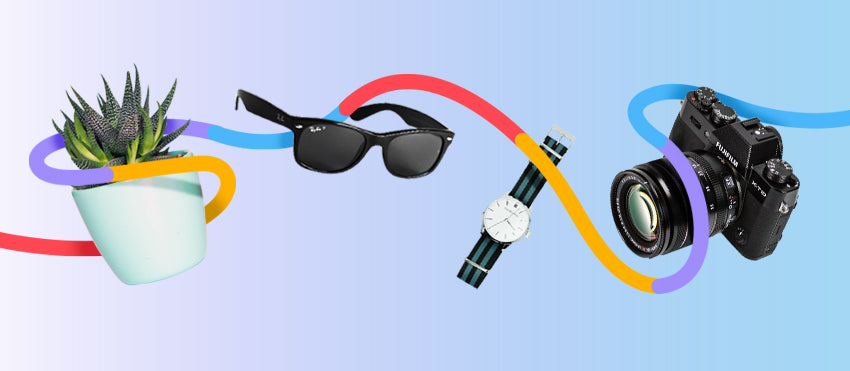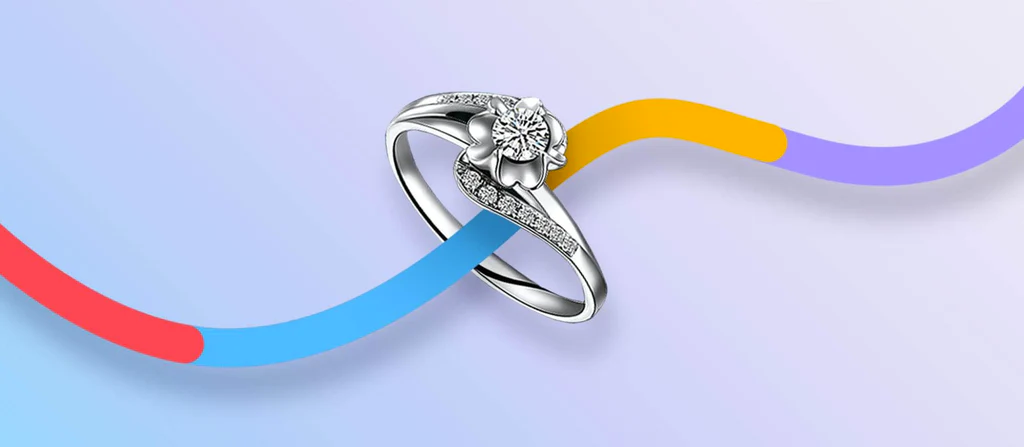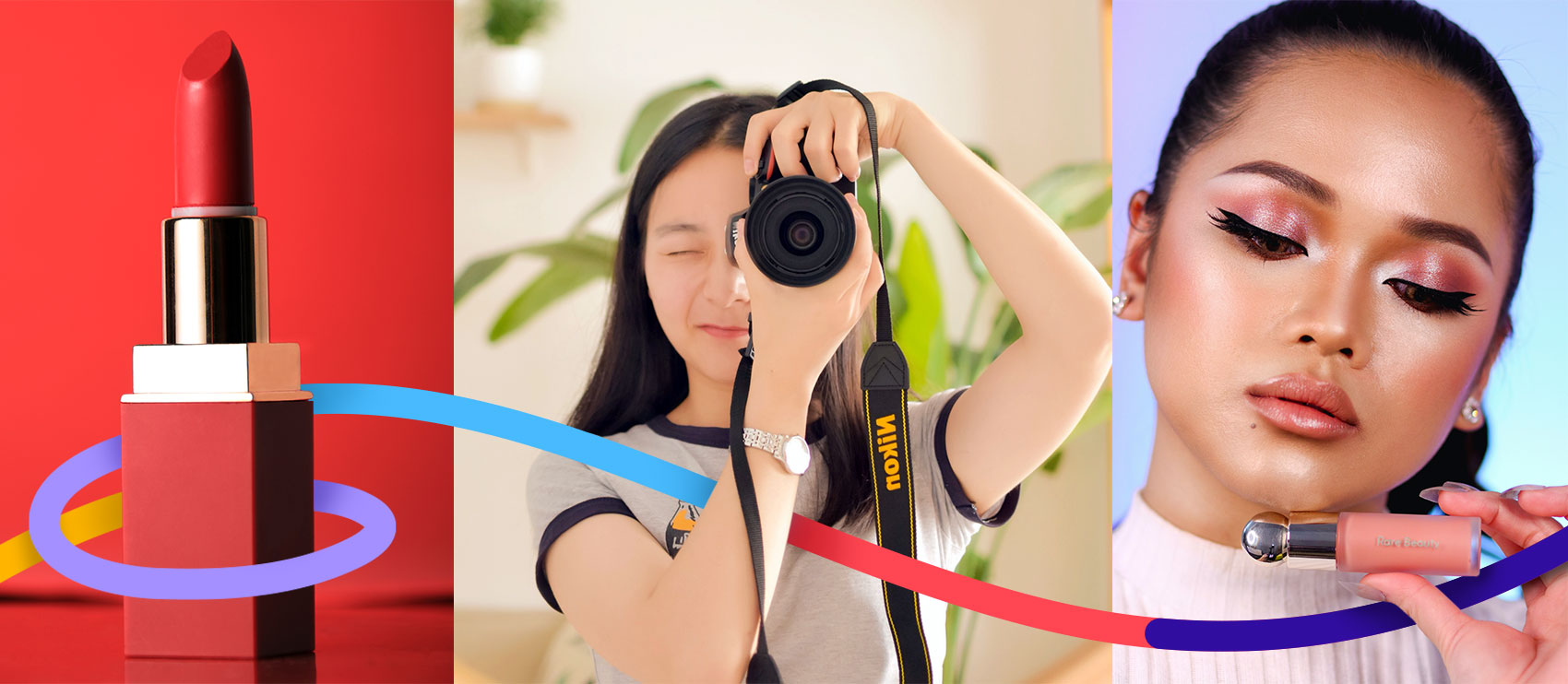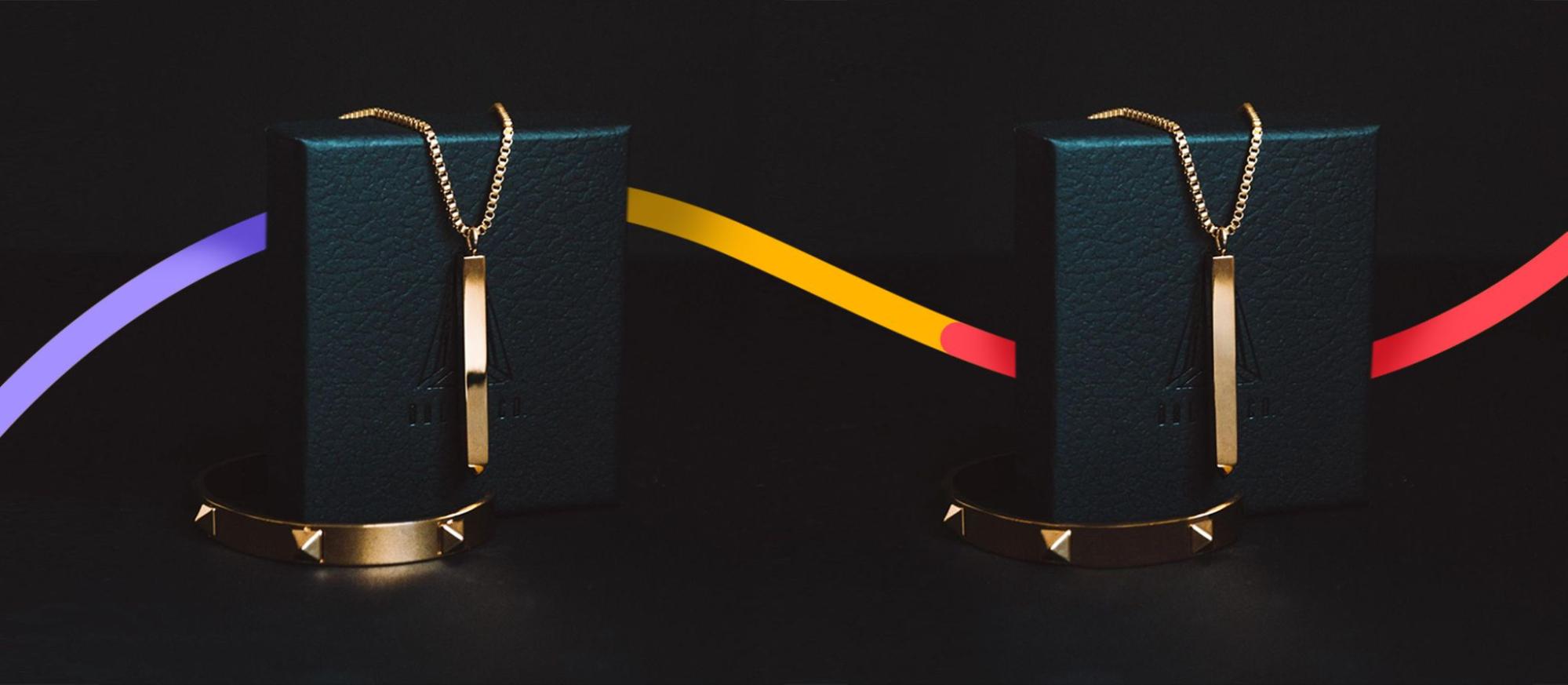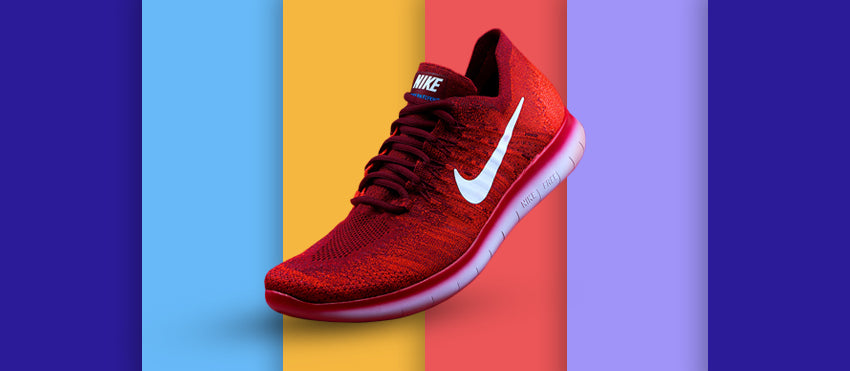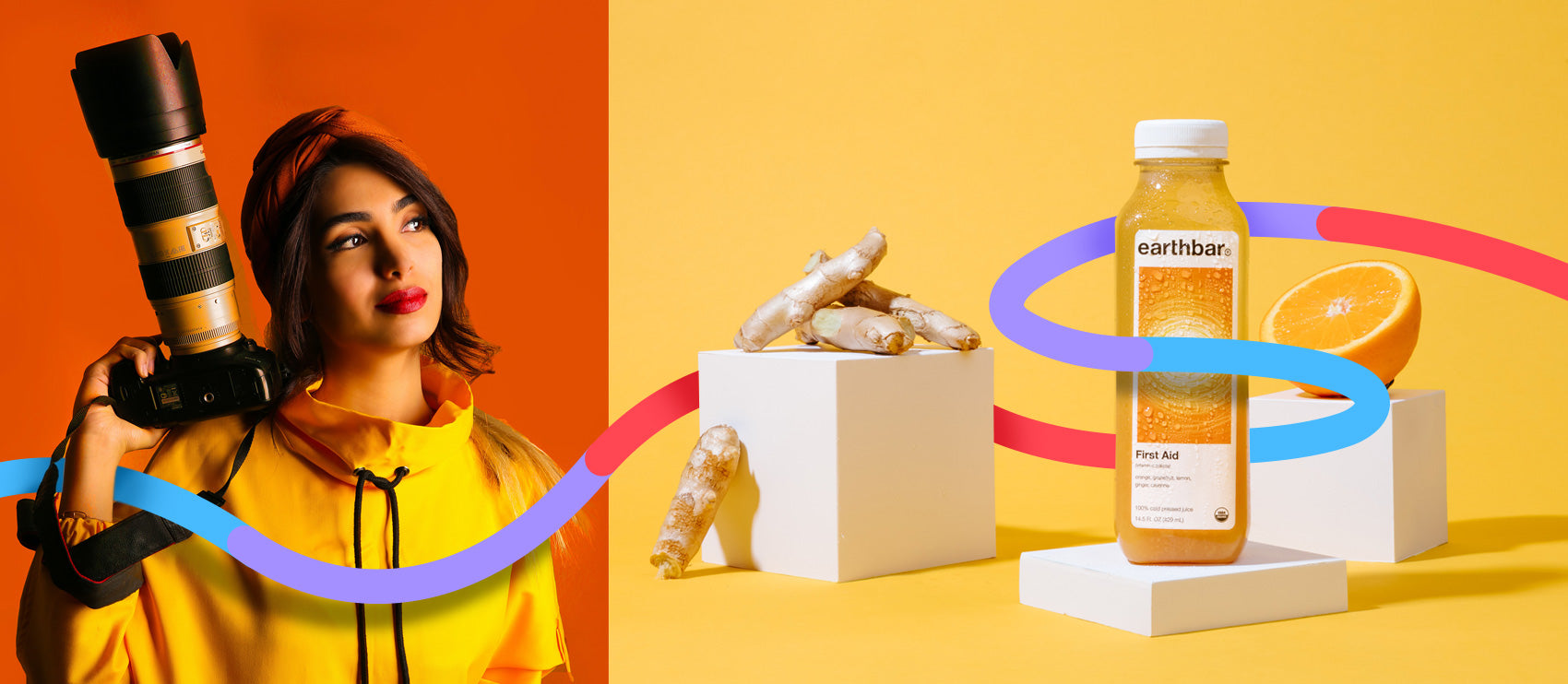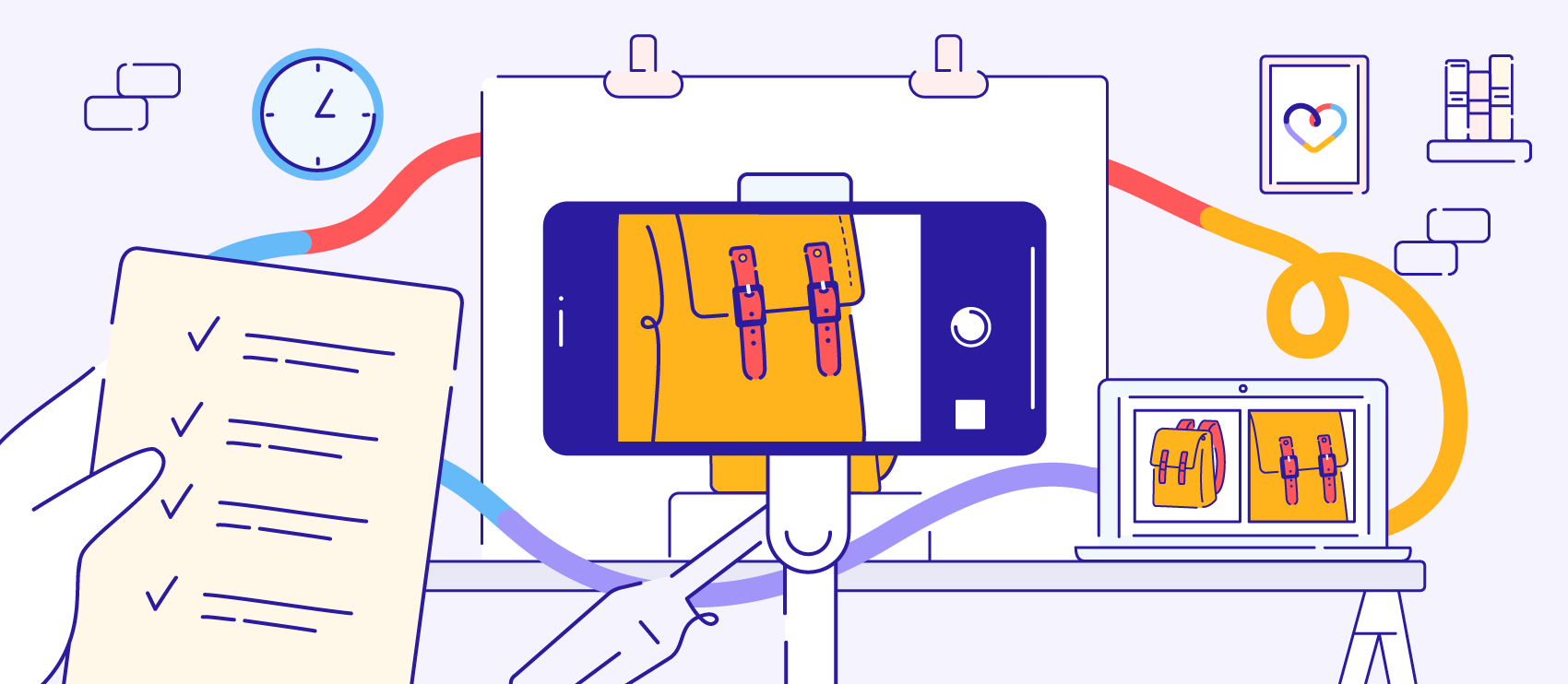Product photography has advanced significantly over recent years. And as ecommerce continues to grow, your product images are increasingly important. Below, look at the definition of product photography, as well as best practices and examples to inspire your own.
Receive free ecommerce & product photography tips
What is product photography?
Product photography is any image of a good for sale. Sometimes known as commercial photography, these images are meant to entice shoppers to purchase the photographed products. They feature product details and features, supplemental to written copy and product descriptions. The idea is to give potential buyers a full impression of the product.

Professional product photography typically involves some advanced skill or experience, as well as proper equipment.
As an umbrella term, product photography can also include renderings or renders, which are 3D graphics that look life-like and can almost pass as a real photo. You’ll often see these on sites like Amazon and eBay.
Comprehensive Cranium Care, a brand of “hair” products for bald people, outsources its 3D renders. If you’re strict about the definition, renderings don’t count and only images taken of a real object with a real camera are categorized as product photography.
What is object photography?
Object photography is when you take a photo of an inanimate item. As such, product photography is technically a form of object photography—unless the product is living, like a succulent. In object photography, items are typically non-moving, or still.
Types of product photography
Product photography is a type of object photography and a type of advertising photography, but you can get even more granular:
White background

White background photos are the ones you see on ecommerce marketplaces like Amazon, AliExpress, and eBay. They may have individual product photos or white background shots that feature multiple images. This is arguably the most common product photo type you’ll see.
Superfood self-care and wellness brand Golde uses white background for its product collection pages. The continuity and lack of background distractions make it easy for shoppers to differentiate between products.

Contextual
Contextual shots feature products in use. These types of photos are ideal because they show shoppers how to use the products in their own lives, and it also gives them a sense of scale. People can imagine themselves using the product when you have these types of photos.
The barstools pictured below show context, giving shoppers an idea of what they could look like in their own home.

Lifestyle shots
There’s a lot of crossover between contextual and lifestyle photos. One key difference, though, is that lifestyle photography includes and is often focused on actual people. Some contextual shots lack humans.

The lifestyle product photo above shows people enjoying one another’s company over a beverage and meal. This image depicts an experience others can expect if they purchase the beverage too.
Scale shots
Scale shots are product photos that give a frame of reference so people can envision how big the products are. While product specs and dimensions are descriptive, sometimes shoppers need an image to see how big or small it is in comparison to common objects.
The below image shows a teacup and accompanying dish, along with someone holding it to give you a sense of just how tiny this item is.

Detailed
Detailed product shots show small elements that aren’t necessarily visible in a standard product photo. You’ll often see this with apparel, footwear, and accessories—especially as you get into the luxury categories.
Pagerie, which makes luxury pet accessories, shows the details of its carefully manufactured dog harnesses and collars.

The tactic applies to other industries and products, too. Skincare brand 4.5.6. Skin uses detailed shots to show how its products look on a real person’s face.

Group
Group product shots feature multiple items. Typically, these products are related in some way. You might bundle them together as a promotion, or feature the same item in different products. That’s what Spicy Caribbee Spice Shop does in this example:
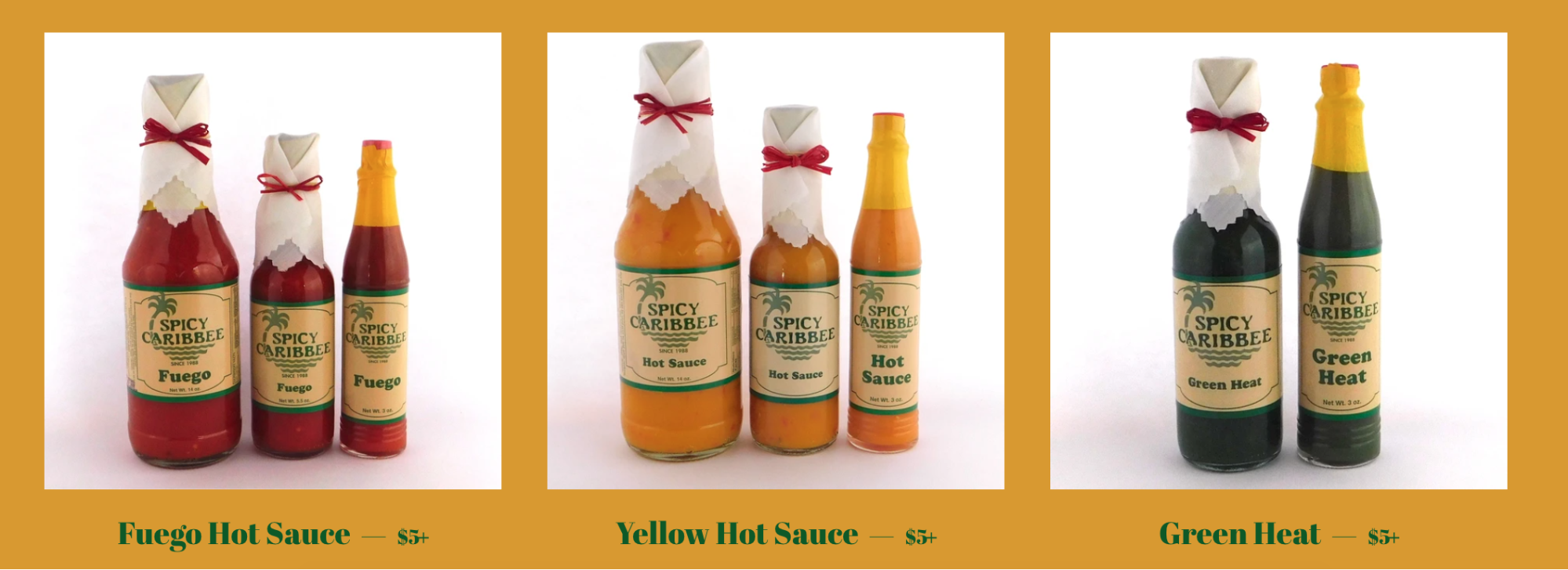
Flat lay
Flat lay product photos hit their stride on social media, Instagram in particular. Flat lay photos are taken from a bird’s eye view. The layout lends itself to creative ways to arrange your products, so it’s a good way to have fun and add diversity to your site’s imagery. Plus, these high quality images play particularly well on social media.

Beauty supply brand Bread uses the flat lay approach to showcase its mud mask in the example below. This gives buyers an opportunity to really see the texture of the product.

Packaging
Packaging product photos are the images that go on the box, bag, label, or whatever packaging holds your merchandise. These photos are important because they appeal to in-person shoppers. It’s especially important to consider this if the packaging hides the product, which you commonly see with food and beauty items.

You can even add product packaging to your other photos as well. This adds dimension and creates brand recognition for people who interact with you both online and offline.

User-generated
User-generated content (UGC) includes product photos taken by anyone other than your brand or employees. These photos are typically shared on social media, so you can repost or feature the content on your own website as a form of social proof. UGC product photography isn’t ideal as your main photo, but it’s a great complement to your product pages.
Skincare brand Topicals has a carousel of UGC photos at the bottom of their website. It shows authenticity and social proof of their products.

How do you take product photos?
While the art of product photography requires much more than a single article (there are courses listed below!), the high level process is as follows:
- What: Determine what you’re shooting, including the product itself as well as any props, models, backgrounds, equipment, etc.
- Who: Figure out who’s involved with the shoot — including models, stylists, lighting specialists, photographers, assistants, clients, and more.
- When: Beyond establishing a time and date, build out a schedule for how you envision the day to go. This keeps people on the same page and on task so you have time for everything you need to accomplish.
- Where: Location includes where you’re having the shoot as well as where your “what’s” and “who’s” are.
- Why: Last but certainly not least, you want to know the why behind your shoot. In other words, set clear goals. Instead of “10 product photos for Amazon” aim for “10 product photos to launch on Amazon as part of our customer acquisition strategy for a key demographic.”
For more information about shooting your own product photos, check out these articles:
- How to Build a Photography Studio from Scratch: Everything You Need to Take Your Own Product Photos
- Etsy Product Photography Tips: How to Sell Lots of Products
- Fundamental Photo-Editing Checklist: 11 Steps to Perfect Product Photos
What equipment do you need for product photography?
For product photography, all you really need is a smartphone camera. But for high-quality shots that convert shoppers, you’ll want a dSLR or mirrorless camera and 50 mm lens as the bare minimum.
Here is a general overview:
- Camera: A high-quality DSLR or mirrorless camera is ideal, but modern smartphones can also work well.
- Lenses: Different lenses for various types of shots, such as macro lenses for close-ups and wide-angle lenses for larger products.
- Tripod: To keep the camera steady and ensure consistent framing.
- Backgrounds: Plain, usually white or neutral backgrounds to make the product stand out.
In addition, you may want:
- Macro lens
- Zoom lens
- Tilt-shift lens
- Grip equipment
- Lights
- Reflectors
- Props and shadow boxes
- Editing software
Product photography best practices
While your product photos should reflect your unique brand and appeal to your specific target audience, there are a few universal truths and best practices:
Get the gear
While smartphone photos may work for social posts or email, you want high-quality photos for main product pages. Invest in a high-quality camera and lens or hire a professional who has their own equipment to shoot your photos for you.
Choose your background wisely
Some ecommerce marketplaces require plain white backgrounds, and if you’re shooting for other channels you have more leeway. Whatever the background, it should reflect the aesthetic you’re after while keeping the focus on the product.
Think about the context
Consider the context for your products and for your shoppers. It’s important to show the product in use, using models and contextual backgrounds and props. But it’s also important to consider the context in which your shoppers are viewing the photos. If they’re on mobile (they likely are), offer zoomed-in shots and closeups of important product features.
Maximize your investment
Shoot with repurposing in mind. Professional product photos are a significant investment, and you want to make the most of it. Think about using your product photos on more than just ecommerce pages, but also in digital marketing and ad campaigns, on social media, in emails, and for labeling or packaging.
Remember the details
It’s always important to edit your photos afterwards, no matter how great the original shot is. You may have to fix imperfections that have the potential to distract potential buyers and negatively impact conversions.
Outsource the tedious bits
Lots of photo edits, like background removal and color changes, are so detail-oriented and time-consuming. It can take an entire day just to edit a small batch of photos. If you find your time is bogged down with post-processing, consider outsourcing the edits. Be wary of any providers that use automation and AI, as they run the risk of imperfections the human eye won’t miss.
Enjoy it
At the end of the day, it’s important to have fun. Even though you have constraints on what you can do with the images, you can still get creative with it. Use outsourcing and other ways to take some of the stress out of your day to day so you can find your passion and get back to the work you love.
3 product photography examples
Looking for some inspiration from real-world brands with compelling product photos that can inspire your own visuals? Here are three examples:
1. Grounded Plants

The Grounded Plants brand has such a distinct look and feel, and the product photos are a continuation of that. The backgrounds are plain so not distracting but interesting enough to fit with its overall aesthetic. Plus, variety breaks up the monotony of a single hue.
2. Otherland

Candle brand Otherland has a creative touch to its product photo backgrounds. It stages shots of its candles with fun props and backgrounds to evoke different moods for each candle.
3. SOKO

SOKO sells jewelry that was handcrafted with sustainable materials in Nairobi, Kenya, so the magic is in the details. And the details aren’t lost when it comes to its product photos. The perfect mix of white background, detailed, and lifestyle shots, SOKO’s photos are as beautiful as the designs themselves.
Product photography courses
There are tons of product photography courses out there — ranging from beginners to advanced, and many specializing in specific niches. Here are some product photography courses worth checking out:
- Product Photography for Ecommerce, Shopify Compass (free): Learn how to take product photos to sell online, including white background shots, home studio setup, and step-by-step process to outsourcing.
- Commercial Photography Classes, CreativeLive (prices vary): Browse a range of commercial photography courses from CreativeLive, choosing from different areas of focus, instructors, cost, and more. This class, for example, takes you through tabletop product photography.
- Product Photography at Home, Craftsy ($29.99): Professional photographer and small-business owner Jessica Marquez leads the course. You’ll learn how to create tabletop setups for product shoots, including lighting, backgrounds, working with models, and post-production.
- Shoot Products Like a Pro, Phil Stills (£197): 13 short modules take you through everything from lighting and studio setup to white backgrounds and cut-outs. You can try the first two modules for free.
- Mobile Product Photography Class, Weebly (free): This product photography course shows you how to capture shots with your smartphone. The course is from 2017, so while some of the tactics may be outdated, a lot of the principles still apply.
- Still Life Photography, UCLA Extension (?): Learn lighting and camera techniques, food and product photography, and basic Photoshop edits. This course is only available at certain times, so check back for enrollment information and updates.
12 product photography statistics
Below are some recent product photography statistics, studies, and surveys to keep your finger on the pulse:
1. People process images in just 13 milliseconds
One MIT University study found that the human brain can process images after viewing them for just 13 milliseconds. That means they can process a product image just as quickly. Your product photos play a huge role in the first impression, so it’s important they’re high-quality.
2. People can recall 2,000+ images with 90% accuracy
One 2013 study showed people 2,560 photographs for a period of just 1 second. After viewing all the images, they tested the participants’ memory recognition. The participants were able to recall more than 2,000 images with at least 90% accuracy, even after a period of three days.
3. 88% of ecommerce sites use inspirational product photography
According to the Baymard Institute, “bespoke imagery is one of the biggest factors in positively influencing the user’s initial perception of the site.” 88% of brands have responded to this and incorporate such images on their websites.
Plus, a growing number of online brands are using these images as paths to purchase. Only 47% of sites linked to products featured in inspirational imagery in 2013, compared to 91% in 2019.
4. On a scale of 1 to 10 for difficulty, marketers rate producing visual content a 7
In one survey from Venngage, marketers were given the option to rank the difficulty of consistently producing visual brand content, with 1 being the least difficult and 10 being the most difficult. On average, marketers ranked this task a 7.
5. Nearly half of marketers put 20–50% of their budget into visual content creation
In that same Venngage survey, marketers were asked about their marketing budgets. Nearly half (45.7%) said they put anywhere between 20% and 50% of their budget towards creating visual content. This is likely to increase—there was a 9.5% increase in marketers planning to put at least half of their budget towards visual content production by the end of 2024.
6. The photo printing market is worth more than $15 billion
Globally, the photo printing and merchandise market is worth more than $15 billion. It’s forecasted to grow at a CAGR of more than 5%. By 2027, it’s estimated to be worth more than $20 billion.
7. Photo prints and frames are the most popular types of photo products.
The following list shows the most-ordered printed photo products in 2023, from most to least:
- Prints
- Frames for wall decor
- Frames for table/desk
- Mugs
- Photo Cards
- Calendar
- Clock
- Albums
- Puzzle
- Notebooks
- Canvas, banners, and signs
10. 9 camera companies dominate the global market
The Global Digital Cameras Market Recent Trends, In-depth Analysis, Size and Forecast To 2027 notes nine top camera companies in the world:
- Canon
- Nikon
- Sony
- Pentax
- Olympus
- Fujifilm
- Casio
- Panasonic
- Samsung
9. 53% of businesses want to try AI image generators
AI product photography and editing is a trending topic. While the technology is far from perfect, more than half of businesses would like to experiment with using AI image generators, according to a survey from Semrush.
10. Ice Cream Castles shortened their photo-editing workflow from 7 days to 1 day
Children’s clothing brand Ice Cream Castles used to take an entire week to edit product photos before they were ready to use them. This took too much time they could’ve spent growing and improving the business—doing the things they love. They started outsourcing their edits and shortened photo edit turnaround time from 7 days to just 1 day.

11. Formkraft took 5 days to shoot photos for their new website
Photography Prodoto shot product images for Formkraft’s new website that sells a range of merchandise and consumables. The shoot took five days and shot initial concepts for 18 Master Category images and four additional website banner images. It takes time to get high-quality shots!
12. Medalia paintings convert at 17% when they feature artist photos
A/B testing tool VWO’s customer Medalia sells Cuban and Haitian art online. They ran an experiment to see if featuring artist photos as well as product photos would boost conversions. It did. Products that featured artists converted 17.2% of the time compared to 8.8% without.
Now it’s time to edit your product photography
Ready to take your product photos up a notch? Even if your photos are gorgeous, they’re likely to need some edits. You can fumble in photo editing software or outsource it to the pros who already know their way around in Photoshop.
Whether it’s retouching to smooth out a wrinkle on a model’s t-shirt or background removal to put it on pure white for an Amazon listing, you can outsource your tedious editing tasks to Path, your 24/7 virtual photo editing studio.
Wish you could just hand this over to a pro? Surprise, you can.
Learn moreProduct photography FAQs
What is needed for product photography?
- Camera
- Lenses
- Lighting
- Tripod
- Background
- Reflectors and diffusers
- Editing software
- Props
What is the meaning of product photography?
Product photography is a subcategory of commercial photography that focuses on capturing high-quality images of products for marketing and promotional purposes. The images are used in advertisements, websites, catalogs, and other marketing materials to showcase the product in the best possible light.
What is the idea of product photography?
The idea of product photography is to give potential buyers a full impression of a product. In ecommerce, it essentially replaces the in-person product experience a shopper would have in-store.
What is the role of product photography?
The role of product photography is to help shoppers better understand the products they intend to purchase. It should showcase the product, build trust, enhance the brand image, boost sales, and ultimately reduce returns.

